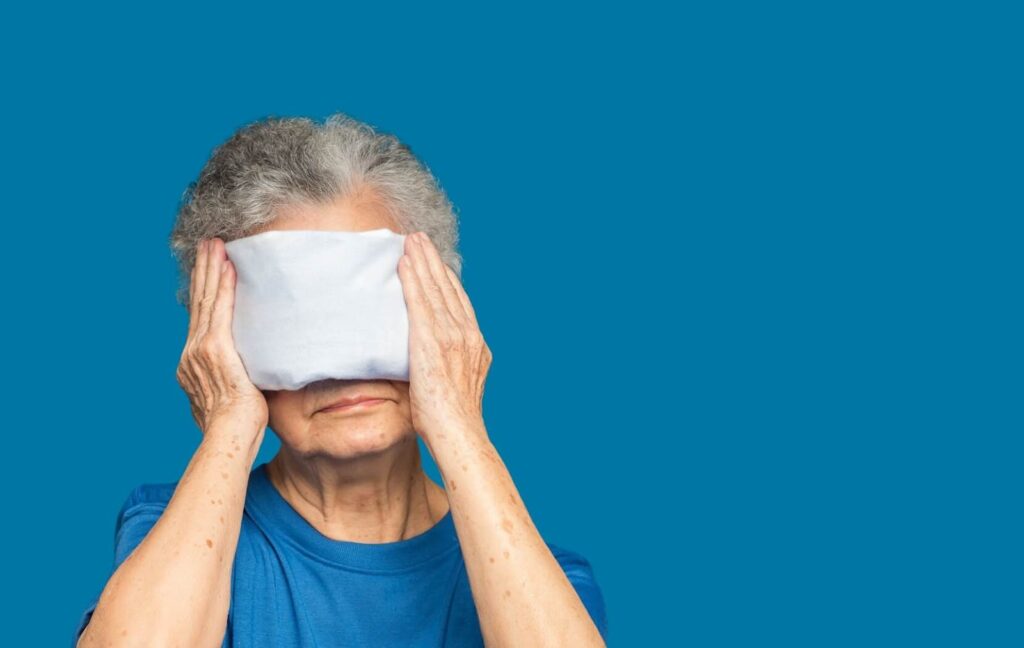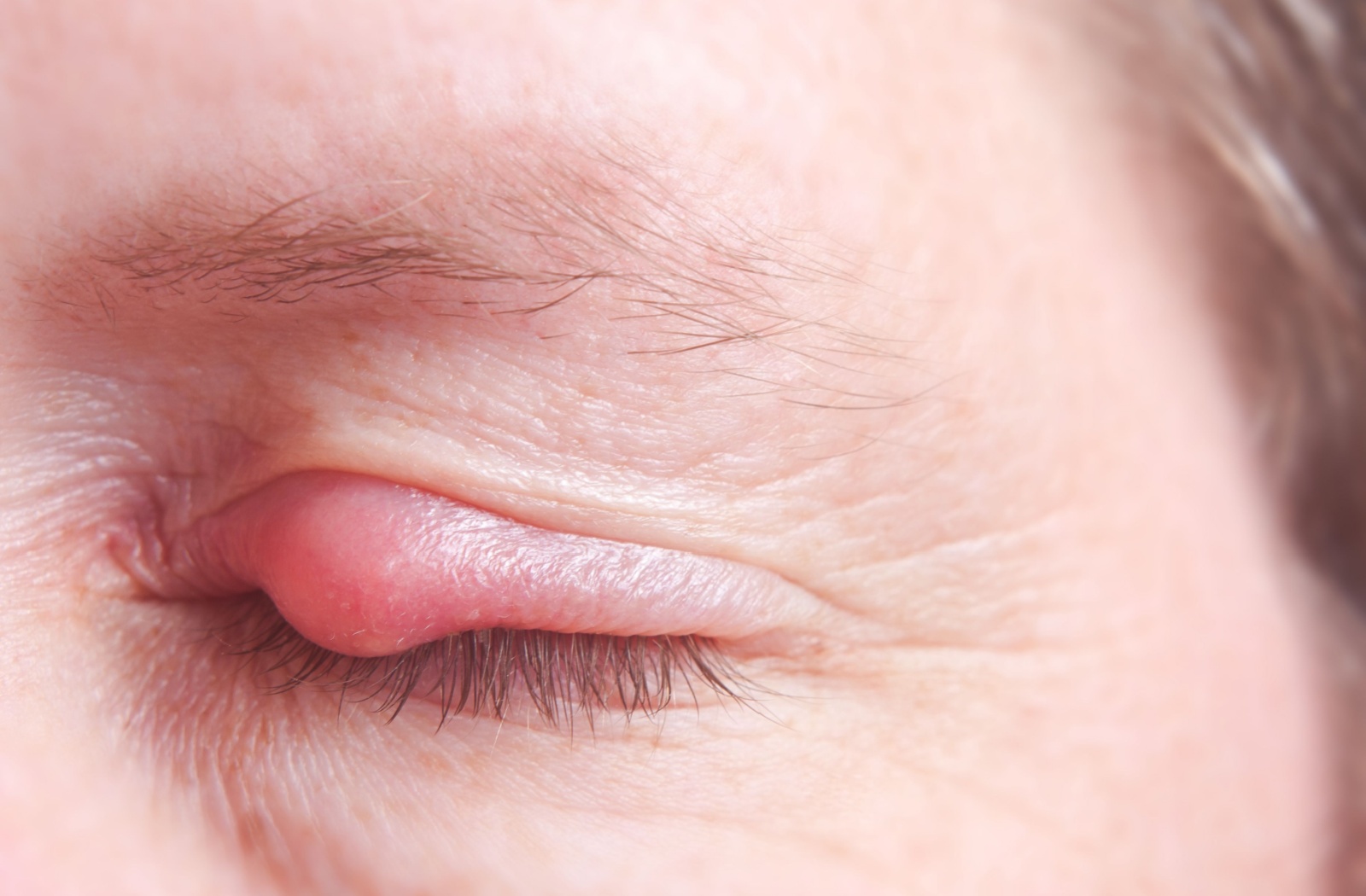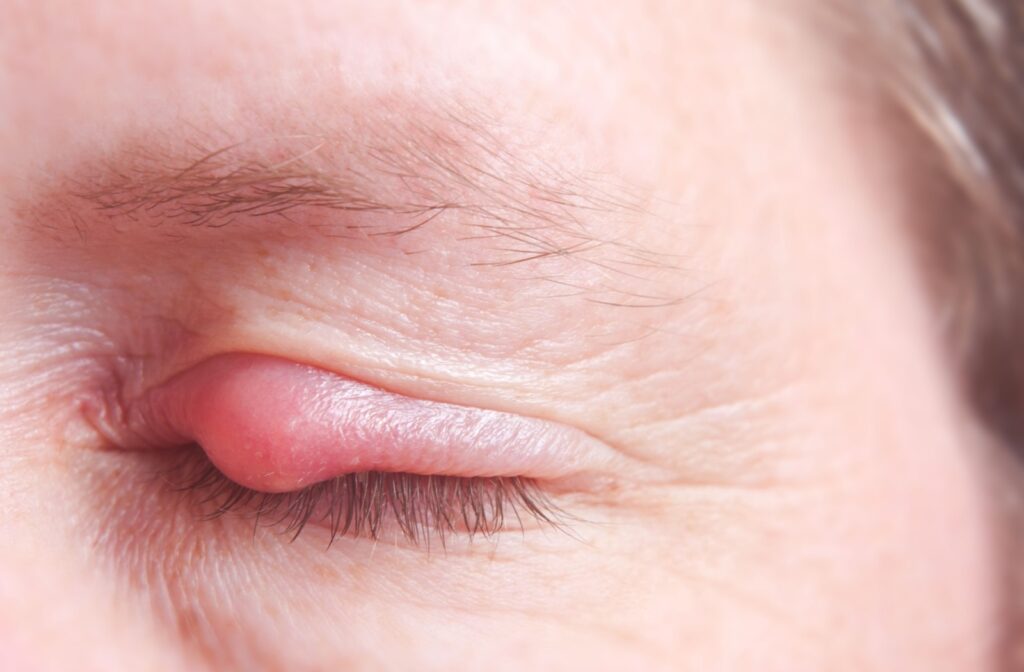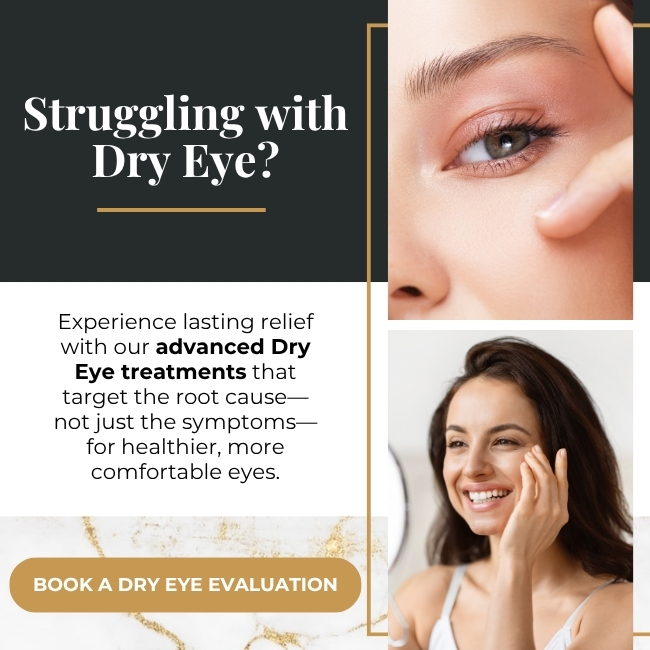Have you ever noticed a pimple-like bump on the skin along your eyelashes? It might be an eyelid stye. Eye styes are a common eye condition caused by a blockage of the sebaceous (oil) glands in your eyelids.
While eyelid styes might be uncomfortable or unsightly, they’re not dangerous. Some eyelid styes will go away with the help of gentle at-home remedies and good eyelid hygiene: many will need medical treatment or surgical removal by a professional.
What Is a Stye?
A stye, also known as a hordeolum, is a red, painful bump that forms on the eyelid, at the edge of your eyelid margin, or near the base of an eyelash. This happens when the oil glands in your eyelid become blocked and/or infected, often by bacteria.
Styes can appear externally (on the outside edge of your eyelid) or internally (on the inside part of your eyelid). They cause inflammation and swelling, making your eye feel uncomfortable and tender.
Types of Styes
There are two different kinds of styes. Depending on the location of the oil gland blockage, the stye can be external or internal.
1. External Stye
An external stye will form at the base of an eyelash or around the glands resulting in a small, red bump on the outer lining of the eyelid margin, also known as the water line.
2. Internal Stye
An internal stye develops in the inner eyelid, due to blockage of the meibomian oil glands that reside in the inner upper or lower eyelid. Internal styes are often more painful than external styes and are stubborn to treat and resolve.
What Causes Eye Styes?
Styes usually stem from bacterial infection or blockage of the oil glands along your eyelid. Here are the most common culprits behind styes:
- Poor eyelid hygiene: Not washing off makeup or touching your eyes with dirty hands can introduce bacteria.
- Clogged oil glands: Overproduction of oil can block the glands, trapping bacteria inside and leading to infection.
- Underlying skin conditions: People with conditions like blepharitis (Demodex mite infestation and inflammation of the eyelid margins) or rosacea are more prone to styes.
- Contact lens use: Improperly cleaned lenses increase your risk of eye infections, including styes.
- Weakened immune system: A compromised immune system may make it harder for your body to fight off bacterial infections.
Stye Symptoms to Watch For
How do you know if you’re dealing with a stye? Some of the primary symptoms include:
- A red, swollen bump (like a pimple) inside or on your eyelid.
- Tenderness or pain around the affected area, but can also be painless
- Increased tearing or watery eyes.
- A sensation of something gritty or foreign in your eye.
- Sensitivity to light.
- Crust forming around your eyelid, especially after sleep.
How to Treat a Stye at Home
If you currently have a stye, don’t worry, it’s a common condition with plenty of effective remedies. Make sure not to touch, squeeze, or try to pop your stye to avoid spreading bacteria around your eyelid.

The best way to treat a stye is with professional diagnosis and treatment. Here are the best ways to manage a stye at before seeing a professional. If you don’t see any improvements in a stye within a few days of using these treatments, consult an eyecare professional such as an optometrist.
Heat Mask
Gently press a heat mask to the affected eye for 10–15 minutes, three to four times a day. The warmth helps to soften and melt the blocked oil gland to drain and promote faster healing.
Practice Good Eyelid Hygiene
Use a cleanser formulated for the eyes, clean the area around the stye and rest of the eyelid/eyelash margins. Avoid makeup or contact lenses until the stye has healed to reduce the risk of introducing or spreading bacteria.
When to Seek Medical Treatment
If your stye doesn’t improve within 2-3 days, or if you experience worsening pain, vision changes, or widespread swelling, it’s time to see a healthcare professional as soon as you can.
The most common medical treatment for styes is radio frequency (RF) treatment to heat up the meibum (blocked oil inside the sebaceous gland) followed by an eyelid expression. Think of this like getting a facial extraction except an extraction of the eyelid glands. Most styes will resolve within 3-4 weeks when properly treated with RF heat and professional expression to drain the gland. Repeat sessions may be necessary for stubborn, very large and obstructed styes.
If thermal heat and expression is unsuccessful and the stye persists for 3months or more, surgical incision and drainage is the next step. In this process, a small incision is made in the stye and the stye is drained. Healthcare professionals may also prescribe antibiotics to kill the bacteria causing the stye or steroid medications to promote quick healing in the eye.
How to Prevent Styes in the Future
The good news? Styes can be preventable. And the sooner you treat the underlying causes the better long term outcome you will have. Not only will you prevent recurrence, you will prevent your eyelid oil glands from atrophy from being plugged up long term. Here are a few simple habits to reduce your risk of developing a stye again.
- Wash your hands frequently: Avoid touching your face and eyes with unclean hands to stop bacteria from spreading.
- Remove makeup every night: Sleeping with makeup on can lead to clogged oil glands and an increased risk of infection.
- Clean your eyelids regularly: Daily eyelid hygiene should be a part of everyone’s routine with a gentle cleanser formulated for the eyes to be eye safe and non-irritating. Chat with our team via our website for our doctors’ recommendation.
- Replace makeup and contact lenses: Old makeup and reusable contact lenses can harbor bacteria, so replace them as recommended.
- Avoid Wearing Makeup on the water line. This will directly plug up the sebaceous which secrete oil into your eyes at the eyelid margins.
- Manage underlying conditions: If you suffer from recurring styes, seek medical treatment for contributing conditions such as blepharitis or rosacea (ocular and facial) which might require ongoing management with your eye doctor.
Custom Eye Care For You
Don’t let eye styes impact your daily life or cause future eyelid oil gland atrophy. If you have recurring styes or other concerns about your eye health, Luminance Vision is here to help! Book an appointment with one of our optometrists today and let us help you address your eye stye concerns.




